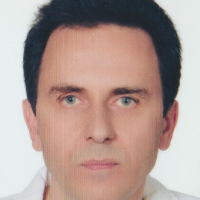مقالات رزومه:
دکتر صادق نیک بخت ناصرآباد
فهرست مطالب این نویسنده: 3 عنوان
-
In this paper, it is determined exactly how much of the loss of exergy in a specify component is concerning the own component and how much of the exergy loss is due to the effects of the rest of the components on that component. In this new method of exergy analysis, at first, the exergy loss in a component is classified as avoid. /unavoid categories. With this classification, it is possible to understand what quantity of the exergy loss of a component is eliminated by optimizing that component and how much of the exergy dissipation can never be eliminated and is related to the nature of the component. In the next classification, by categorizing the exergy loss into endo./exo., we can find out how much of the exergy destruction is due to the non-optimality of other components and has nothing to do with the component itself. Finally, the categories are divided into avoid-endo, unavoid-endo, avoid-exo and avoid-enxo. By performing this new method, the results demonstrate that the highest exergy destruction (1.976 MW) happens in the evaporator, 68% of which is unavoid-endo. exergy loss. The highest avoid. exergy loss relates to low pressure turbine (0.5791 MW). It is shown that optimizing of surrounding components of deaerator, economizers, and evaporators has a greater effect on decreasing the exergy dissipation of these own components, and the most Avoid. exergy destruction is in heat exchangers, pumps, condensers, turbines, expansion valves, reheaters, and superheaters.Keywords: Advanced exergy analysis, solar power plant, Endo., Exo. exergy loss, Avoid., Unavoid. exergy loss
-
Transient simulation and 4E Analyses of a hybrid renewable energy system for an educational buildingIn this research, an integrated fossil-solar energy system has been designed, modeled, and optimized to supply the required loads of a six-story educational building in Tehran. The three heating, cooling, and electrical loads of the building are extracted in an hourly dynamic pattern for one year. System modeling was performed using a developed code in MATLAB software, and the genetic algorithm was used for two and three objective optimizations. The results show that with the two objectives of exergy efficiency and pollution, 68 rows of PVT panels and a solar collector with an area of 6.25m2 should be used. In this case, the maximum use of solar energy to supply 1945.9MWh heat and 484.5MWh electricity occurred during a year. Also, the highest amount of purchased electricity from the grid is 501.9MWh when the exergy efficiency and cost rate are considered as objective functions. In the three-objective optimization, the best system has an exergy efficiency of 50.21%. The CO2 emission and total cost rate are 7.1$/h and 301g/kWh, respectively. In this case, about 583.06 kWh of the heating load is supplied annually by 20 rows of PVT and a solar collector which has an area of 5.27m2. Photovoltaic panels generate 144.1MWh of the system's required electricity. The electricity sold to the grid in this scenario is 55.05MWh. Also, the system has purchased 204.2MWh of electricity from the grid annually. This means that the system should buy electricity from the grid most of the time each year.Keywords: (4E) Analysis, Optimization, Building, Renewable Energy, Dynamic simulation
-
در تحقیق حاضر پس از بررسی روش های مختلف بازتوانی و در نظر گرفتن شرایط فنی یک واحد 320 مگاوات نیروگاه بخار بندرعباس، روش بازتوانی کامل جهت بهبود شرایط این نیروگاه انتخاب شده است. در این راستا کلیه زیرکش های توربین بخار حذف شده و جهت گرمایش آب تغذیه از یک بویلر بازیاب گرمای دوفشاره بازگرمکن دار و دو توربین گاز V94.3A استفاده شده است. محاسبات انجام شده نشان داد که در اثر بازتوانی و بهینه سازی، راندمان اگزرژی نیروگاه تا 99/53 درصد افزایش یافته و آهنگ گرما و نسبت انهدام اگزرژی به ترتیب 27/29 درصد و 07/36 درصد کاهش می یابند.
کلید واژگان: بهینه سازی، بازتوانی کامل، تحلیل اگزرژی، الگوریتم ژنتیک، بویلر بازیاب گرما، توربین گاز V94، 3AIn this study, after investigating different methods of repowering and considering technical conditions of a 320MW unit at Bandar Abbas steam power plant, full repowering method has been chosen for the power plant improvement. For this purpose, all the steam turbine extractions have to be removed and a heat recovery steam generator (HRSG) and two V94.3A gas turbines have to be used. The results obtained from the repowered plant simulation showed that due to repowering and optimization, exergy efficiency increases by about 53.99% and heat rate and exergy destruction ratio will decline by 29.27% and 36.07%, respectively.Keywords: Optimization, Full repowering, Exergy analysis, Genetic algorithm, HRSG, V94.3A gas turbine
نویسندگان همکار
بدانید!
- این فهرست شامل مطالبی از ایشان است که در سایت مگیران نمایه شده و توسط نویسنده تایید شدهاست.
- مگیران تنها مقالات مجلات ایرانی عضو خود را نمایه میکند. بدیهی است مقالات منتشر شده نگارنده/پژوهشگر در مجلات خارجی، همایشها و مجلاتی که با مگیران همکاری ندارند در این فهرست نیامدهاست.
- اسامی نویسندگان همکار در صورت عضویت در مگیران و تایید مقالات نمایش داده می شود.



